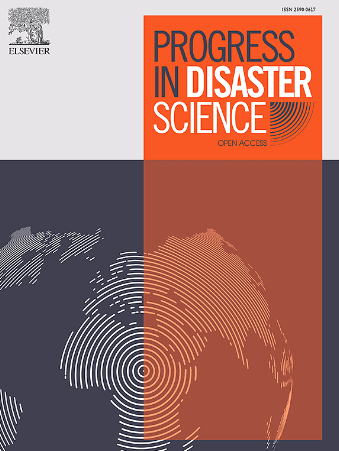雅鲁藏布江河岸形态动态变化:孟加拉国北部侵蚀过程的多时间地理空间评估
IF 3.8
Q3 ENVIRONMENTAL SCIENCES
引用次数: 0
摘要
30多年来(1994-2024年),布拉马普特拉河在孟加拉国北部的Rangpur地区造成了剧烈的侵蚀和增生,重塑了地形和生计。基于归一化差水指数(NDWI)的卫星分析确定了三个阶段:1994 - 2004年,强烈的河岸塌陷和河道迁移造成了62.69 km2的净损失;从2004年到2014年,在堤坝和土地管理措施的支持下,泥沙沉积产生了101.81平方公里的净收益;从2014年到2024年,河流力的恢复和泥沙滞留的减少导致了32.83平方公里的进一步净损失。Fulchhari是下降的热点,而ulpur和Chilmari则表现出交替的侵蚀-增生模式,突出了局部沉积物动力学。这些形态变化具有严重的社会经济影响:农业用地被移动的河道吞噬,社区面临反复流离失所,道路、学校和防洪等基础设施仍处于危险之中。通过将多时相NDWI指标与地理信息系统(GIS)制图相结合,本研究超越了以往的短期或局部研究,提供了对雅鲁藏布江地貌演变的全面、纵向评估。为了解决关键的研究空白,我们的研究结果阐明了自然水动力学和人类干预在十年尺度上的相互作用,并为南亚最具活力的河流景观之一的可持续河岸管理、基础设施规划和社区恢复力提供了重要指导。本文章由计算机程序翻译,如有差异,请以英文原文为准。
Brahmaputra riverbank morpho dynamic changes: A multi-temporal geospatial assessment of erosional and processes in northern Bangladesh
Over thirty years (1994–2024), the braided Brahmaputra River has driven dramatic erosion and accretion in Bangladesh's Rangpur Division in northern Bangladesh, reshaping landforms and livelihoods. Our Normalized Difference Water Index (NDWI)-based satellite analysis identifies three phases: from 1994 to 2004, intense bank collapse and channel migration caused a net loss of 62.69 km2; from 2004 to 2014, sediment deposition—bolstered by embankments and land-management practices—produced a net gain of 101.81 km2; and from 2014 to 2024, renewed fluvial forces and diminished sediment retention led to a further net loss of 32.83 km2. Fulchhari emerged as a hotspot of decline, while Ulipur and Chilmari showed alternating erosion–accretion patterns, highlighting localized sediment dynamics. These morphological changes have severe socio-economic impacts: agricultural lands have been swallowed by shifting channels, communities face repeated displacement, and infrastructure, including roads, schools, and flood defenses, remains at risk. By integrating multi-temporal NDWI metrics with Geographic Information System (GIS) mapping, this study moves beyond prior short-term or localized research to offer a comprehensive, longitudinal assessment of the Brahmaputra's geomorphological evolution. Addressing a key research gap, our findings elucidate the interplay of natural hydrodynamics and human interventions over decadal scales and provide essential guidance for sustainable river-bank management, infrastructure planning, and community resilience in one of South Asia's most dynamic fluvial landscapes.
求助全文
通过发布文献求助,成功后即可免费获取论文全文。
去求助
来源期刊

Progress in Disaster Science
Social Sciences-Safety Research
CiteScore
14.60
自引率
3.20%
发文量
51
审稿时长
12 weeks
期刊介绍:
Progress in Disaster Science is a Gold Open Access journal focusing on integrating research and policy in disaster research, and publishes original research papers and invited viewpoint articles on disaster risk reduction; response; emergency management and recovery.
A key part of the Journal's Publication output will see key experts invited to assess and comment on the current trends in disaster research, as well as highlight key papers.
 求助内容:
求助内容: 应助结果提醒方式:
应助结果提醒方式:


